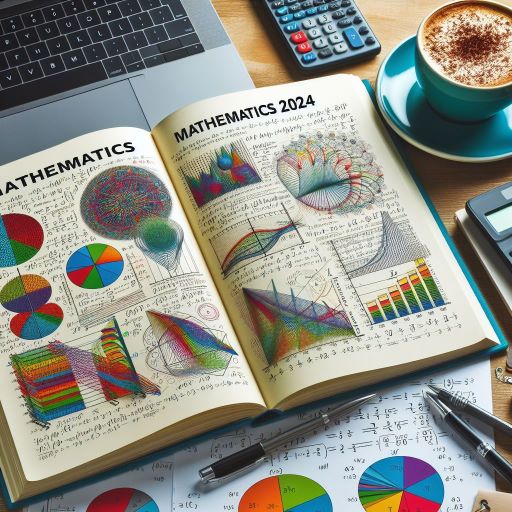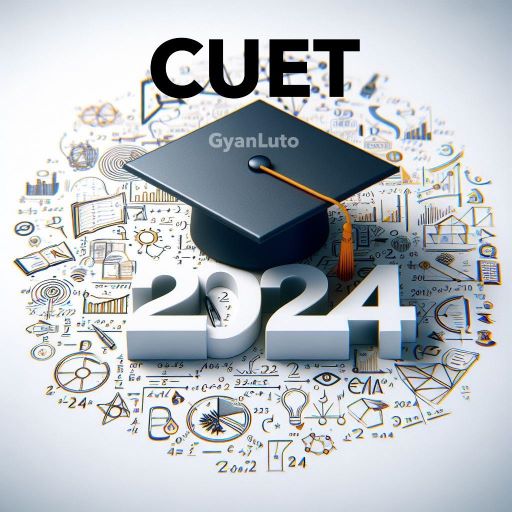CUET Chapter Wise Weightage of Mathematics
If you want to succeed in your chosen field of study, getting ready for the CUET Mathematics exam can be both difficult and rewarding. The syllabus outlines basic topics and techniques that you must master in order to pursue a career in either applied mathematics or pure mathematics. We examine the core curriculum for both mathematics and applied mathematics in this book, giving you a thorough rundown of the subjects covered, a suggested reading list, a marking scheme, and useful study techniques. This will facilitate an efficient navigation of your preparation and improve your exam results.
Table of Contents

Mathematics and Applied Mathematics Curriculum Guide
Section A: Mathematics
- Unit I: Algebra
- Matrices: Covers matrix operations, including types and properties.
- Determinants: Exploring minors, cofactors, and applications in finding areas.
- Simultaneous Equations: Solving equations using matrix methods.
- Unit II: Calculus
- Higher Order Derivatives: Understanding tangents, normals, and function behavior.
- Maxima and Minima: Techniques for finding critical points and determining function behavior.
- Unit III: Integration and its Applications
- Indefinite and Definite Integrals: Integrating simple functions and evaluating definite integrals.
- Application of Integration: Calculating the area under a curve.
- Unit IV: Differential Equations
- Basics: Introducing order and degree, formulating and solving equations.
- Variable Separation: Techniques for solving equations using variable separation.
- Unit V: Probability Distributions
- Random Variables: Exploring probability distributions, expected value, and variance.
- Binomial Distribution: Understanding key concepts and calculations.
- Unit VI: Linear Programming
- Linear Programming: Mathematical formulation, graphical methods, and optimization.
Section B1: Mathematics
- Unit I: Relations and Functions
- Relations: Types and properties of relations, including one-to-one and onto functions.
- Inverse Trigonometric Functions: Examining graphs and properties.
- Unit II: Algebra
- Matrices and Determinants: Concept and operations of matrices, properties, and applications.
- System of Equations: Solving linear equations using inverse matrices.
- Unit III: Calculus
- Continuity and Differentiability: Exploring derivatives, mean value theorems, and their interpretations.
- Applications of Derivatives: Rates of change, tangents, normals, maxima, and minima.
- Integrals and Applications: Integration techniques and area calculations.
- Differential Equations: Solving various types of equations and their applications.
- Unit IV: Vectors and Three-Dimensional Geometry
- Vectors: Understanding types, operations, and dot and cross products.
- 3D Geometry: Examining lines, planes, distances, and angles in 3D space.
- Unit V: Linear Programming
- Linear Programming Concepts: Graphical methods, optimization, and constraints.
- Unit VI: Probability
- Probability Concepts: Conditional probability, Bayes’ theorem, and binomial distribution.
Section B2: Applied Mathematics
- Unit I: Numbers, Quantification, and Numerical Applications
- Modulo Arithmetic: Concepts of congruence and modular arithmetic.
- Numerical Problems: Real-life scenarios involving boats, streams, races, and games.
- Unit II: Algebra
- Matrices: Properties and operations, including transpose and symmetry.
- Unit III: Calculus
- Higher Order Derivatives: Differentiation of parametric and implicit functions.
- Marginal Cost and Revenue: Calculating cost and revenue using derivatives.
- Maxima and Minima: Finding critical points and evaluating function behavior.
- Unit IV: Probability and Distributions
- Probability Distributions: Understanding random variables and their distributions.
- Variance and Standard Deviation: Calculating measures of dispersion.
- Unit V: Index Numbers and Time-Based Data
- Index Numbers: Constructing and testing index numbers.
- Time Series Analysis: Exploring time series data and components.
- Unit VI: Statistics
- Population and Sample: Understanding sampling methods and their limitations.
- Parameter and Statistic: Differentiating between population and sample measures.
- Unit VII: Time Series Analysis
- Time Series: Identifying chronological data and its components.
- Unit VIII: Financial Mathematics
- Perpetuity and Sinking Funds: Understanding concepts and calculations.
- Bond Valuation: Calculating bond values using present value approach.
- Calculation of EMI: Concepts and methods for EMI calculation.
- Linear Depreciation: Calculating depreciation and interpreting asset values.
- Unit IX: Linear Programming
- Linear Programming: Formulation and solution methods for different types of problems.
This summary offers an organized view of the CUET Mathematics/Applied Mathematics syllabus, encompassing the essential concepts, operations, and techniques covered in each section and unit
CUET Chapter Wise Weightage of Mathematics
Here is a table showing the approximate chapter-wise weightage for the CUET Mathematics exam, based on the usual distribution of 50 questions:
| Chapter | Approximate Weightage (Questions) |
|---|---|
| Sets and Functions | 5 – 7 |
| Algebra | 12 – 15 |
| Coordinate Geometry | 7 – 9 |
| Calculus | 10 – 12 |
| Mathematical Reasoning | 4 – 6 |
| Statistics and Probability | 4 – 6 |
| Vectors and 3D Geometry | 3 – 5 |
These weights provide a general guide to how the 50 questions might be distributed across different topics. It is always important to review all topics thoroughly and be aware of any changes in the exam pattern for your specific exam year.
Marking Scheme
| Section | Number of Questions | Duration | Unique Features |
|---|---|---|---|
| Section IA: Languages | 40 questions out of 50 to be attempted in each language | 45 minutes per language | Tests language proficiency and comprehension, allowing you to demonstrate your skills in the language of your choice. |
| Section IB: Language Proficiency | 40 questions out of 50 to be attempted in each language | 45 minutes per language | Focuses on proficiency in additional languages, offering the chance to showcase your adaptability and linguistic versatility. |
| Section II: Domain-Specific Subjects | 35 or 40 questions to be attempted out of 45 or 50, depending on the subject | 45 minutes per subject | Assesses your understanding and mastery of domain-specific knowledge related to your chosen field of study. |
| Section III: General Knowledge and Current Affairs | 60 questions out of 75 to be attempted | 60 minutes | Tests your general knowledge and awareness of current events, assessing your ability to stay informed and think critically about the world. |
Recommended Books for CUET Mathematics Preparation
- NCERT Class 12 Mathematics Textbook:
- NCERT books offer comprehensive coverage of the syllabus, ensuring a strong foundational understanding.
- Pradeep’s Mathematics Textbook for Class 12:
- This textbook is known for its clear explanations and ample practice questions.
- R.S. Aggarwal Mathematics for Class 12:
- This resource provides extensive practice and a variety of question types to help strengthen your problem-solving skills.
Effective Preparation Strategies for CUET Mathematics
- Understand the Exam Format: Familiarize yourself with the structure of the exam, including the types of questions and distribution of topics, to guide your study plan.
- Identify Key Topics: Review past papers and analyze common question patterns to pinpoint topics that frequently appear and those carrying the most weight.
- Leverage Your Strengths: Assess your strong and weak areas to focus your efforts. While strengthening your best topics, allocate time to reinforce weaker areas where needed.
- Consistent Practice: Work through past papers and take regular mock tests to build confidence and improve your time management. After each test, evaluate your performance to identify areas for improvement.
- Seek Guidance: Consult mentors or teachers for insights on improving accuracy and tackling challenging topics. Their feedback can help you refine your approach and boost your scores.
- Stay Adaptable: Keep an open mind and adjust your study strategy as you progress. If a specific approach or topic isn’t working, seek alternative methods or resources.
- Manage Time Wisely: Practice pacing yourself during mock tests and exams to ensure you can complete all questions in the allotted time.
During a 10-day period, the CUET 2024 exam will be given in a computer-based style with several time slots each day. Your chosen courses or disciplines will determine the exact day and time of your exam. You’ll be ready to take on CUET Mathematics with confidence if you make use of these study tools and advice.
In summary
As you get ready for the CUET Mathematics exam, keep in mind that preparation strategy might have a big impact on your performance. You can increase your chances of success and boost your confidence by concentrating on comprehending the curriculum, practicing regularly, and making the most of your talents. This guide’s tools and tactics might act as a road map to assist you on your preparatory trip. If you continue to practice and be flexible, you should have no trouble getting the score you want on the CUET Mathematics exam. I wish you luck as you travel!


